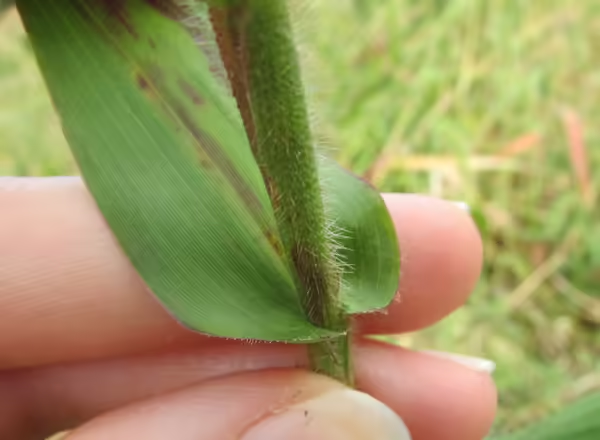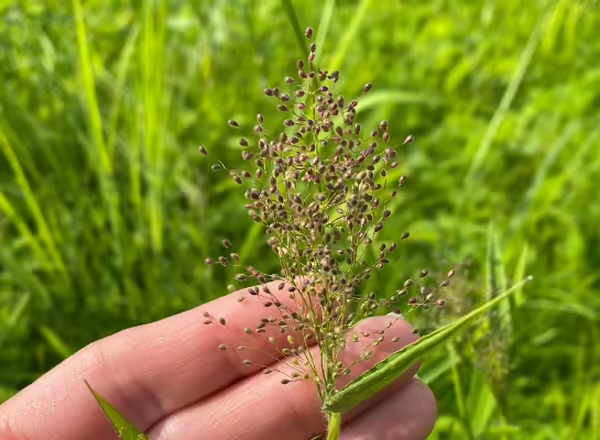
A few weeks ago I was leading a plant identification hike in a restored prairie. Naturally in a prairie system, there are a lot of grasses to identify! We saw some tallgrass species as well as some weedy grasses. We also saw one of the 30+ species of Panic grasses that we have in Illinois, Dichanthelium clandestinum, also known as Deer Tongue Grass. I think this grass is super unique because of its broad leaf shape and coat of hairs.
Where and how it grows
Deer Tongue Grass is a native species found across Illinois, especially in the southern half of the state. It prefers moist edge habitats, like the edge of a wooded area, but can also be found in full sun. It usually grows in dense clumps, and ranges in size from 2-4 feet tall.
Looking at the leaves
This grass has broad leaves that encircle, or clasp, the stem, and taper to a point. This shape makes them stand out from many other grasses that have linear leaves. The leaves can be hairy or smooth, but the leaf sheaths are typically covered in dense, stiff hairs.




Flowering not once, but twice
Deer Tongue Grass and the other grasses in its genus exhibit a different flowering pattern. In late spring they produce a terminal panicle of spikelets. These flowers are outcrossing. However, after producing these flowers, the grass continues to grow, and in the summer will produce smaller, additional panicles that emerge from side shoots along the stem. The flowers produced in these panicles are self-crossing flowers produced as a backup plan for this grass to ensure seed production.
The spikelets of this grass are very round and arranged densely in a branched panicle. The spikelets and branches are often covered in hairs.
Never miss a new post! Sign up for our email list.
ABOUT THE AUTHOR: Erin Garrett is a Natural Resources, Environment, and Energy Educator for University of Illinois Extension serving Alexander, Johnson, Massac, Pulaski, and Union counties. Erin develops and delivers high impact programming to adults and youth to help them develop an appreciation for natural resources and to empower them to make small changes to positively impact the environment. Erin’s programming focuses on why homeowners should consider choosing native plants, how to support native pollinators, how to identify grasses, how to identify and manage invasive species, and developing an appreciation for prairie ecosystems.
ABOUT THE BLOG: Grasses at a Glance dives into grass identification, focusing on tips and tricks that make grass identification possible. Get information about native and non-native species, how to tell look-alikes apart, and which grasses you can find in Illinois. Never miss a new post! Sign up for our email list.